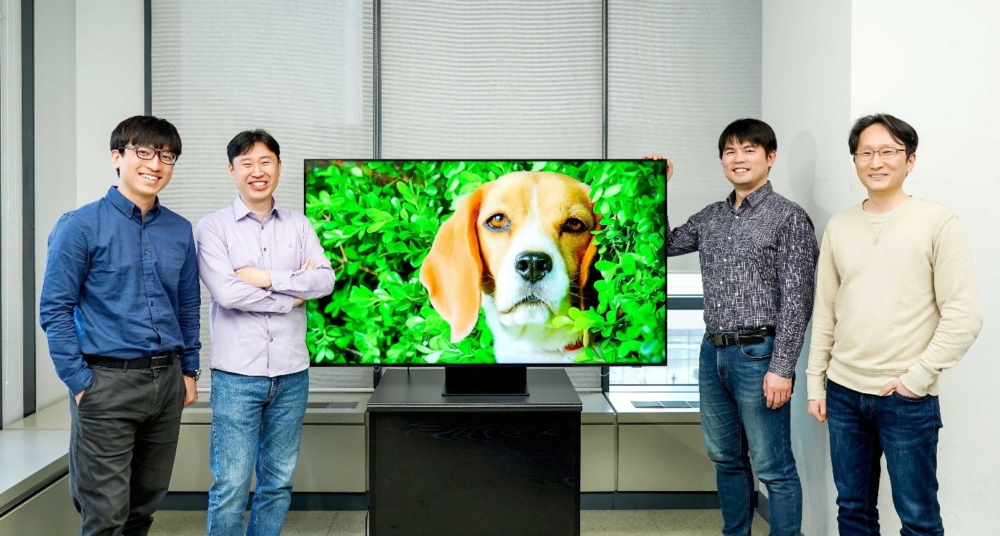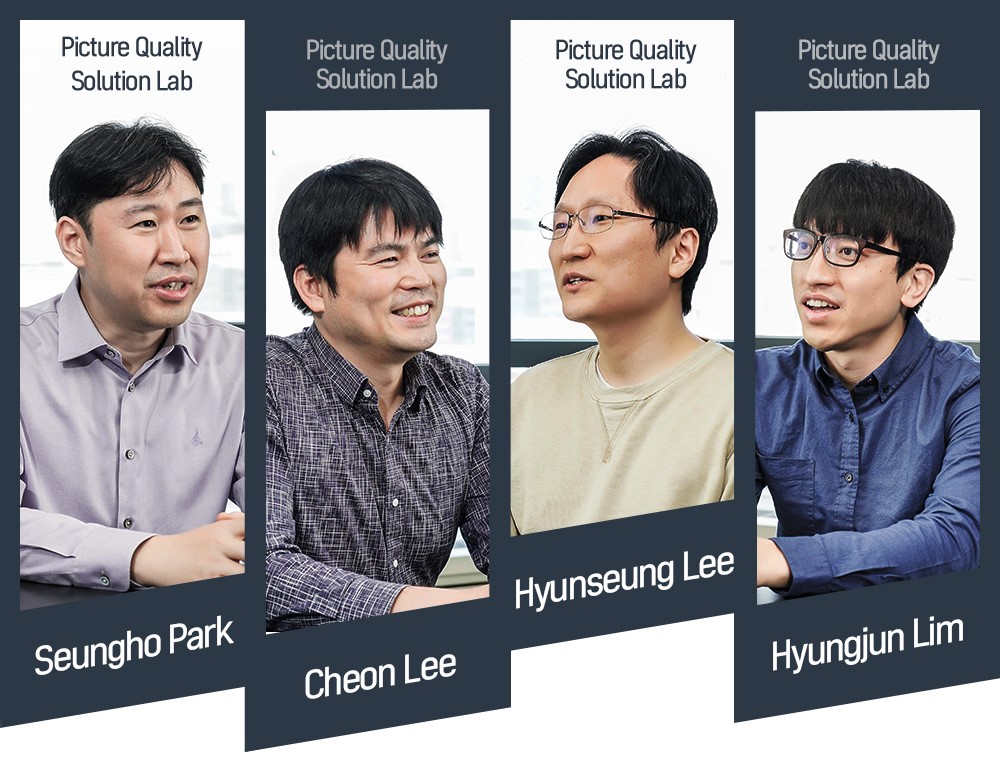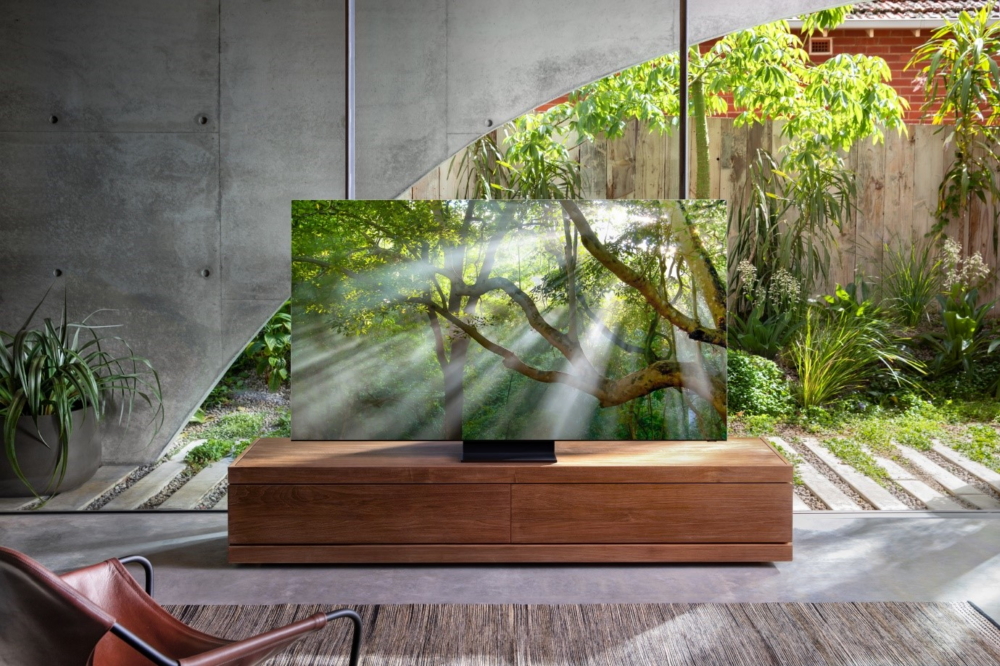

(From left) Hyungjun Lim, Hyunseung Lee, Cheon Lee and Seungho Park of the Picture Quality Solution Lab of Samsung Electronics’ Visual Display Business
In recent times, screen picture quality has transcended high definition – these days, it’s all about ultra-high definition. Although today’s hardware has been developed to support not just 4K content but 8K content as well, only recently has content begun to actually be produced to 8K quality standards. Therefore, in order to improve the video display quality of content made before 8K existed, upscaling technology exists to keep up with today’s ultra-high definition standard.
Samsung Electronics’ 2020 QLED 8K TV lineup continuously receives praise for its devices’ innovative display quality, sound, design and many other areas. In particular, the range showcases an impressive evolution with regards to its video upscaling technology, at the core of which is Samsung’s AI Quantum Processor 8K.
Samsung Newsroom interviewed the team from the Picture Quality Solution Lab of Samsung Electronics’ Visual Display Business to learn more about this revolutionary technology.
Leveling Up Deep Learning for Optimized Upscaling
When a low-resolution video plays on a high-resolution display, the resulting image quality can be below a viewer’s expectations. AI (artificial intelligence) upscaling is a technology that converts low-resolution videos into ones of more vivid and natural resolutions by analyzing the video data and adapting it intelligently.
In 2018, Samsung Electronics implemented its machine learning-based AI 8K upscaling technology for the first time. This technology harnesses machine learning wherein a human-designed algorithm intelligently analyzes the various video qualities, including line, light and color, and improves each of these for an improved display resolution. Such deep learning capabilities permit a TV to analyze and process video features whilst simultaneously learning thanks to an artificial neural network that acts in the same way as the human brain.
The members of Samsung’s Picture Quality Solution Lab focused on developing deep learning algorithms that enable displays to always showcase optimum video qualities without human intervention. “Deep learning enables more precise and efficient image quality improvements than can be achieved by humans alone,” noted Hyungjun Lim, who developed the AI upscaling technology’s texture generation method.
This operational advantage is what led the team to develop an AI upscaling technology that combines machine learning with deep learning – Samsung’s AI Quantum Processor 8K. “Previous machine learning technology brought about enhanced sharpness to display picture quality, but now our technology can also offer more delicate texturing,” noted Hyunseung Lee, who developed enhanced edge sharpness for the AI Quantum Processor 8K. “Images with complicated textures, like mountain or grass landscapes, can now be upscaled into 8K quality more naturally.”

Solving the Conundrum of Deep Learning
Although deep learning has limitless potential, there are still obstacles to be overcome. The Picture Quality Solution Lab team had to go through countless trial-and-error scenarios in order to make their technology market-ready. “It was difficult for us, at first, to clearly follow and comprehend the algorithm being developed by the artificial neural network of the processor,” highlighted Cheon Lee, the developer of the AI Quantum Processor 8K’s network structure and learning method. “The artificial neural network’s high hardware chip power consumption was an issue we had to solve, too.”
After a lengthy development process, Samsung was eventually able to solve the problems that had arisen thanks to its range of differentiated technologies. “We achieved the highly efficient display quality performance of our processor by making it a hybrid technology that combines complexity along with different aspects of deep learning and machine learning,” explained Lee.
Dreaming Bigger, Better and More Realistic with AI
It wasn’t that long ago that the day-to-day application of AI-powered technologies was but a distant dream to us. Nowadays, technology has improved rapidly to the end of improving the lives of people across many different areas of everyday life.

“We are now able to categorize videos of differing quality levels in a more detailed way while also bringing these AI categorization technologies to the commercial market,” noted Seungho Park, who worked the AI Quantum Processor 8K’s noise elimination and improving the detail contrast range. “Such technologies permit next-generation displays, such as The Wall, to be able to showcase all kinds of videos at the most realistic qualities possible today.”
This AI-powered innovation is not just limited to upscaling technologies. There exist a variety of ways to harness AI to improve the screen qualities of displays, including video quality categorization, noise elimination, data-compression-caused distortion restoration and spatial or time-based resolution restoration, to name just a few. “Our goal is to continue Samsung’s legacy of providing leading TV viewing experiences by combining the advantages of our next-generation displays with AI technologies that can restore videos to realistic-level qualities, regardless of their original qualities and resolutions,” affirmed Park. The future of QLED 8K is looking bright.
